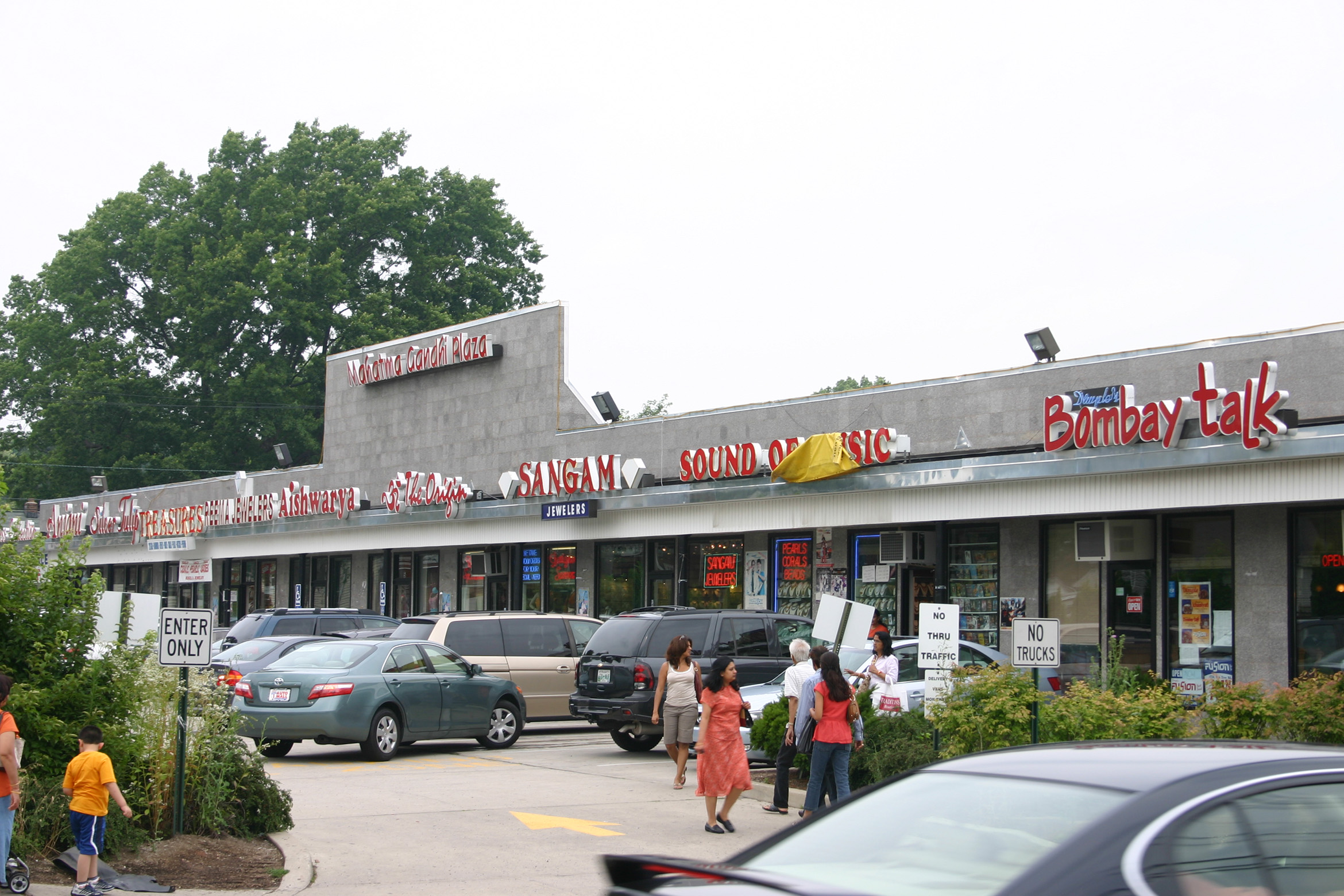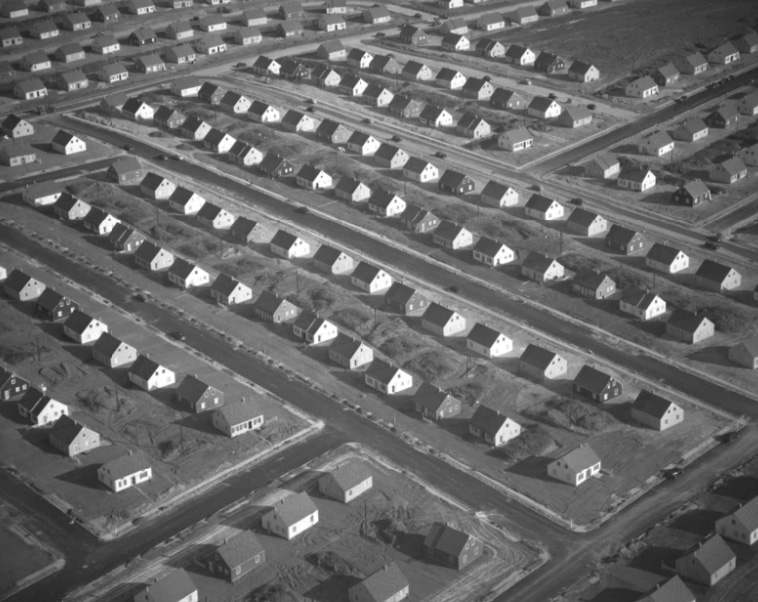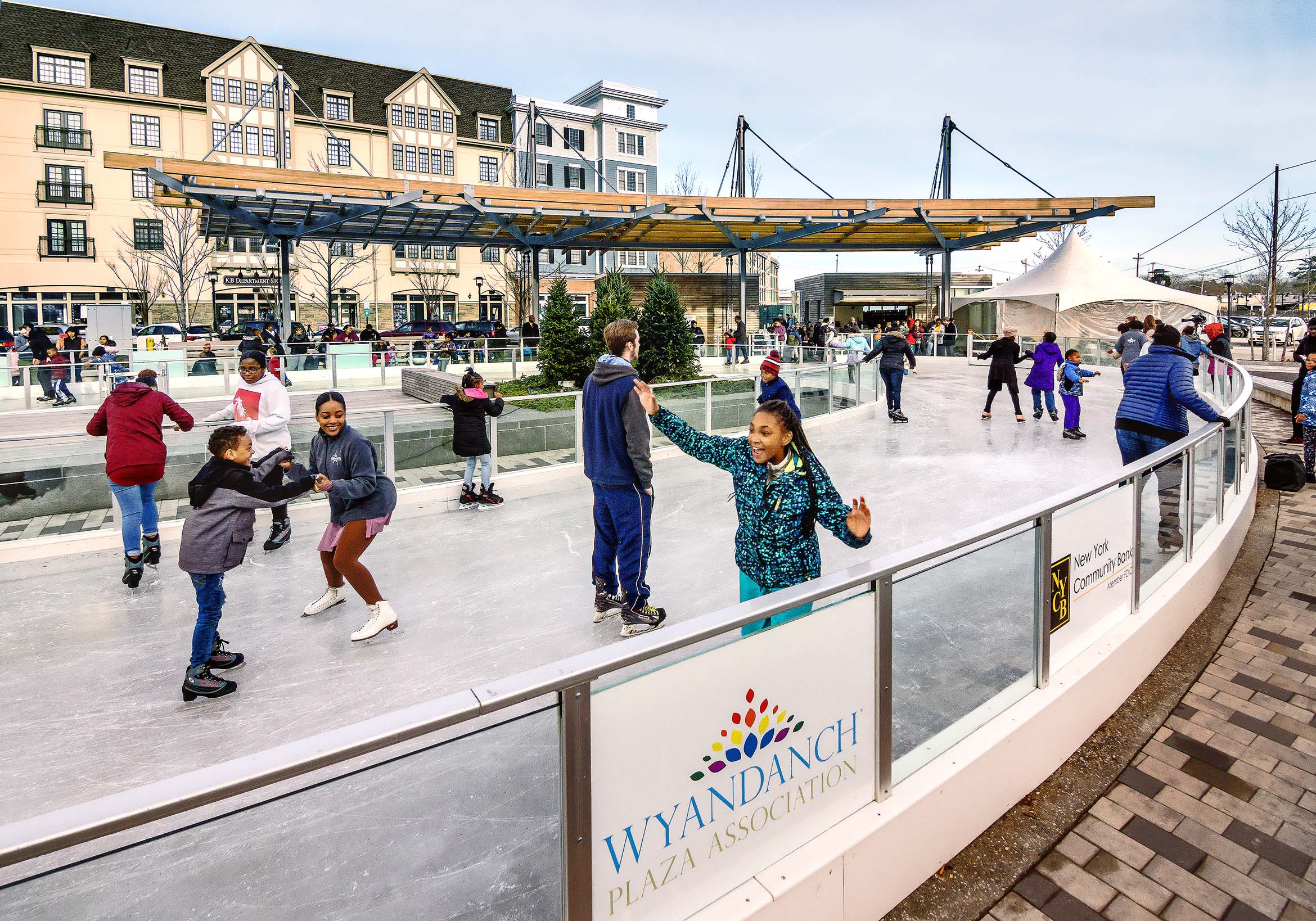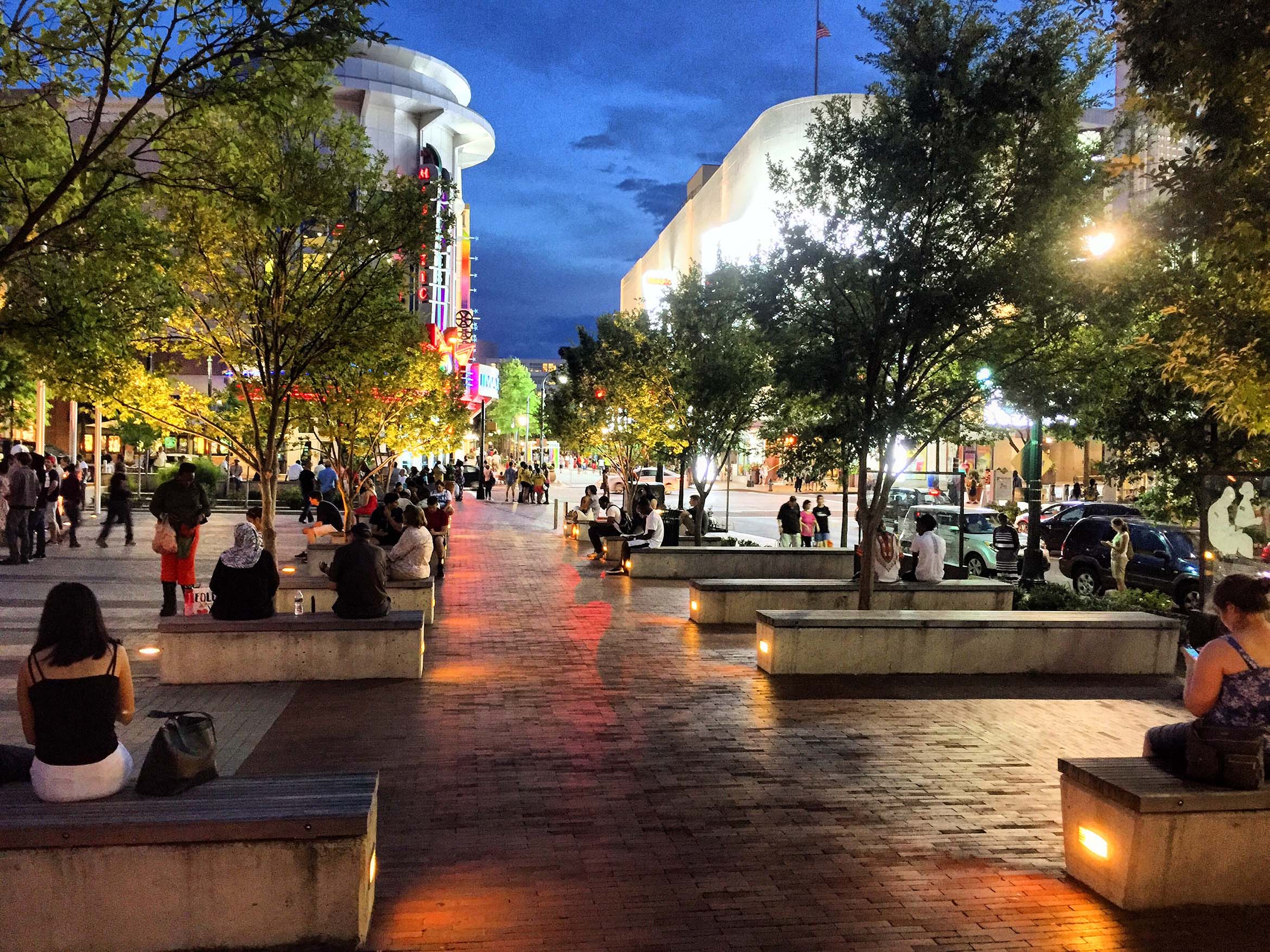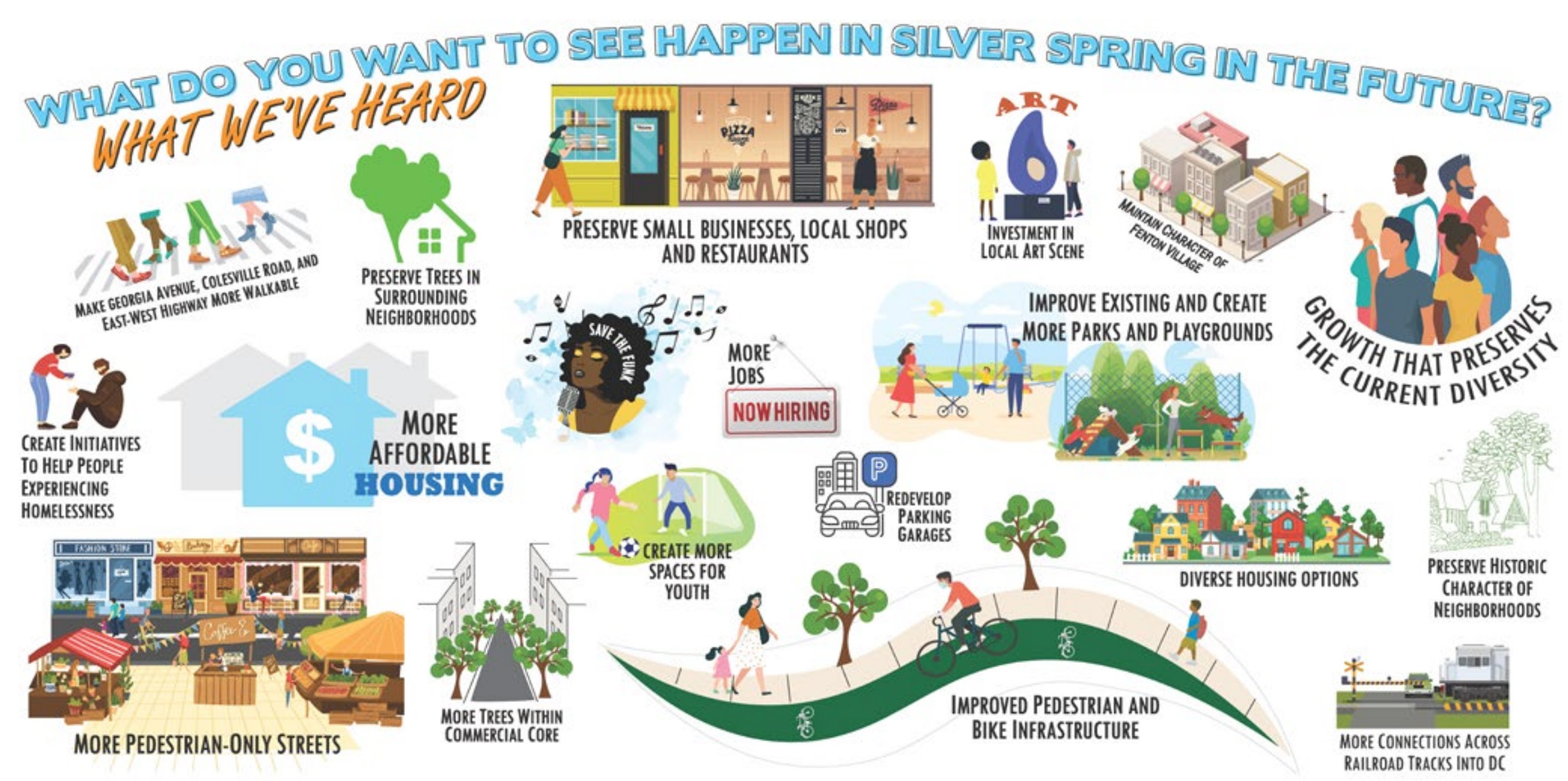
We are celebrating 15 years — and counting — of stories that are deeply researched and deeply felt, that build a historical record of what the city has been.
We are celebrating 15 years — and counting — of stories that are deeply researched and deeply felt, that build a historical record of what the city has been.
“Affluent and middle-class Americans live in suburban areas that are far from their work places, in homes that they own, and in the center of yards that by urban standards are enormous.” Thus did the eminent urban historian Kenneth T. Jackson define “suburbia” in his classic 1985 book Crabgrass Frontier: The Suburbanization of the United States. What’s left out of Jackson’s definition, but presumed, is that suburban Americans are white. Crabgrass Frontier and Robert Fishman’s Bourgeois Utopias: The Rise and Fall of Suburbia (1987) formed the cornerstones of “suburban studies” and still reliably anchor college course syllabi. But the American suburban story up to the 1980s is more complicated than the green lawns it consistently conjures. And the major transformations over the decades since have further altered our understandings of the “nature” of US suburbia. What colors are the crabgrass now?
As an architecture student in the 1990s, I puzzled over my instructors’ and classmates’ reflexive dismissal of suburbs, suburban form, and, by extension, suburbanites. While I didn’t disagree about the what (sprawl, pollution, consumption, exclusion, and so on), I wondered about the why. Part of the problem, it seemed, was a stubborn refusal to even try to see suburbia not simply as a static foil for cities, but rather as a dynamic, always diverse set of real places, full of lived struggle and strife.
In recent decades, the suburbs of major US metropolitan areas have become home to more of the country’s racial and ethnic minorities and immigrants than cities have. South Asians have settled in and around Edison, New Jersey, and Central Americans in Brentwood and Central Islip, Long Island. Suburban counties also have the greatest share of people living in poverty, more than center cities or rural areas. But they suffer from a policy blind spot, with relatively sparse access to funded services and support. A much-lauded return to the city has, at the same time, led to the displacement of people of color to already distressed inner suburbs that are unprepared and ill-equipped to help them thrive. The titles of new books that probe the state of suburban race and class struggles today include words not typically associated with the suburban American dream: diversity, shadow, poverty, gentrification.
The work of historian Becky Nicolaides and other scholars initiated a “new suburban history” at the start of the millennium, engaging the multiple strands of race and class that ran parallel to the dominant one of suburban affluence and whiteness. Her first book, My Blue Heaven: Life and Politics in the Working-Class Suburbs of Los Angeles, 1920-1965 (2002) narrated the story of Los Angeles’ industrial suburbs, where thousands of poor white migrants settled to work in the 1920s, using weekend sweat equity to self-build homes. This same self-reliance and pride in homeownership later fueled racialized resentment and violence in the civil rights era, just as the jobs began drying up.
In The New Suburbia: How Diversity Remade Suburban Life in Los Angeles after 1945, she expands the story of Los Angeles on an encyclopedic scale. Nicolaides seems to have read and synthesized everything relevant under the sun. Conducting extensive data analysis and in-depth interviews, she masterfully describes how Los Angeles became the apotheosis of a suburbanized metropolis, deftly weaving in the larger forces at play: economic restructuring, globalization, new waves of immigration, and civil rights gains. The suburbs of Los Angeles, Nicolaides posits, became a reflection of the whole metropolitan region and a bellwether for the rest of the country. The New Suburbia tells what happened as the region’s demographics evolved, especially after 1970, to include large and growing populations of Black, Latino, and Asian American migrants and immigrants. Four suburbs, each of which has experienced profound change forged in the crucible of localized responses to a specific crisis, tell an overarching story of how the sun has finally set on “the days of suburbia as a white monolith.”
In one case study, Nicolaides scrutinizes the edge city of Pasadena. As Blacks, Latinos, and Asians moved in, many white residents engaged in a form of “flight by staying put,” not by relocating elsewhere, but by transferring their children from public to private schools and withdrawing from civic associations. The neighboring picturesque and elite suburb of San Marino, in contrast, “changed without changing,” as successive waves of very wealthy new Asian residents chose to defend the dominant white culture, firmly declining to adopt any of the visible markers of demographic change found in neighboring Asian-dominant ethnoburbs, such as non-English business signage and brightly colored housepaint.
After the 1970s, while the working-class suburb of South Gate’s industrial base cratered and many white families moved elsewhere, it nearly doubled in population, absorbing thousands of lower-income Latino immigrant families seeking to gain a foothold in the US and drawn to the lower-cost housing; the garages and backyards of self-built homes became ever more chock full of “hidden households” living in makeshift additions and backyard buildings not visible from the curb. South Gate’s local residential density is estimated to match that of Manhattan, an extreme example of unplanned, extralegal, low-rise high density living.
In her final example, Nicolaides looks at Lakewood, widely known as the fastest growing suburb in the entire nation in the immediate postwar period, carpeted with grids of identical, production-built houses (and memorialized in DJ Waldie’s deeply affecting 1996 memoir Holy Land). Long known for its delicate — and unusual — racial and ethnic balance of residents, Lakewood eventually succumbed to conflict and loss of community trust. Residents and leaders sought ways to manage and sustain the balance, with varying degrees of success and no small amount of pain and anguish for the residents of color who were unduly surveilled and policed by suspicious neighbors.
Back east, Tim Keogh revisits the suburban history of Long Island’s Nassau and Suffolk Counties in his new book In Levittown’s Shadow: Poverty in America’s Wealthiest Postwar Suburb. Tracing a century-long arc, Keogh narrates how well-intended liberal policies at the federal level sought to reduce inequality by promoting paths for the urban poor to “move to opportunity” in the suburbs, though these programs insufficiently addressed the deep inequalities and poverty that already existed there. Inequality was particularly acute in suburban Long Island, the so-called “poster child” of postwar economic success. The publicity around archetypical Levittown, where expansive federally subsidized homeownership opportunities built generational wealth for so many families, amplified its successes and obscured its failures.
Keogh dismantles what he calls “suburban exceptionalism,” looking deeply at the experiences of the people this shopworn narrative leaves out, primarily Black Long Islanders who migrated to the region over the course of the 20th century in search of new opportunities, as others did, but tended to remain poor. Steered into unincorporated neighborhoods and blocked from better paying jobs, they were forced to dwell and labor in suburbia’s shadows. Long Islanders of color were shut out from the outlays of generous public subsidies that vaulted so many others into the middle class. As history repeats, the overlooked (and sometimes demonized) margin dwellers on Long Island today are increasingly Latino.
Each of the four Long Island suburban hamlets Keogh examines is a pocket of persistent poverty: New Cassel and Roosevelt, both in Nassau County, and Carleton Park and Wyandanch, both in Suffolk County. His narrative hews close to Nicolaides’ story of South Gate: industrial jobs disappear, owner-occupants are replaced by renters, houses are divided into multiple units, and people live hidden in overcrowded extralegal conditions. Real estate speculators, underwater homeowners, and unscrupulous landlords all contribute to the process. On Long Island today, there are tens of thousands of informal unregulated units; the exact number cannot be accurately counted. People live in them because there is nowhere else to go. Keogh’s tales of hardship, conflict, and grit draw from personal narrative gleaned in interviews and local news accounts as well as labor and housing data analyses. A recurring theme is how policymakers and suburbanites vacillate between placing the blame for these ills on exclusion, or exploitation, or both. The ensuing confusion muddles the search for effective solutions.
In one example, Keogh tells the story of a Black Long Islander named James Baxter. A teenager from Aiken, South Carolina, Baxter moved north on his own in the first Great Migration during the 1920s, recruited to work for a wealthy family as a horse groom. He found cheap accommodation in New Cassel, a small unincorporated area close to Long Island’s elite Gold Coast estates. Working-class jobs were strictly sorted by race and ethnicity, following an unwritten code of discrimination, with employers exploiting entrenched racial hierarchies to depress pay. These patterns persisted into the postwar era and beyond. Working-class enclaves like New Cassel did shield many Black families from poverty, but only for a time. During World War II, Baxter found lucrative work at Grumman, the huge defense contractor. Immediately after the war, however, he was let go and returned to horse grooming. A few short years later, thousands of white veterans moved their families to new small wood-framed houses in nearby Levittown, the Federal Housing Administration-insured, race-restricted, planned community of 17,000 production-built houses with famously low-cost mortgages. Many secured well-paying jobs at Grumman. Through Baxter’s story and those of several others, Keogh exposes the dirty secret of suburbia’s persistent reliance on low-wage workers to toil “in homes, in malls, in fields, on roofs, or with sewing machines.” These precarious workers were an essential part of the process of propelling others towards lifetime financial security and advancement. Must it always be so?
In Suffolk County, the Wyandanch Rising development illustrates a potential path towards progress in holding back gentrification and linking suburban labor to housing affordability. The redevelopment retrofitted the parking lots and brownfields adjacent to the hamlet’s train station into hundreds of new deeply subsidized apartments and civic spaces. Dozens of local community groups and faith-based leaders participated in a complicated 20-year community process prior to implementation, essential to building trust and securing local benefits. Keogh lauds one consequential aspect of the project: a path-breaking labor agreement compelling the developer to train and hire locals for union jobs in the trades. At least two of the jobs went to formerly unhoused people, enabling them to transform their lives.
Wyandanch Rising notwithstanding, the risk is real that attention to reinvestment in suburbs will lead to gentrification-associated displacements. A Washington, DC-based urban planning academic and activist, Willow Lung-Amam found herself asking, “Why was it that gentrification seemed to follow Black folks wherever they went — whether in the city or the suburbs?” For Lung-Amam, who identifies as Black and Asian American, this driving question was both personal and professional. She puzzled over how so many scholars persist in categorizing suburbia as a separate, static foil for city dynamism, even going so far as to imply that suburbs “could not gentrify.” She counters that “gentrification knows no municipal bounds.” The idea that suburbs “were segregated and fragmented and so were people’s experiences and imaginations of them” is a thorny and firmly planted impediment to further progress. Can it be weeded out?
In The Right to Suburbia: Combating Gentrification on the Urban Edge, Lung-Amam fleshes out specific policy proposals for decreasing poverty, increasing opportunity, and opposing gentrification, based on the experiences of three diverse Maryland suburbs just north of Washington, DC: Silver Spring, Langley Park, and Wheaton. She documents easy-to-use toolkits, equity indices, and mapping platforms that are aiding communities in tracking relevant property data and identifying effective solutions. With the aid of professional technical support, residents can leverage these tools to influence redevelopment processes.
Lung-Amam shows how the forces of what she calls “racialized development” tend to displace some residents while profitably reinvesting in others. Taking aim at past suburban retrofitting projects in these Maryland suburbs, where many people displaced from gentrified DC neighborhoods resettled, she describes how local activists and political leaders seeking to support small businesses owned by Black and Brown residents have learned from earlier mistakes and missed opportunities as they press “for greater control over investments happening in their backyards, a larger slice of benefits, or simply the right to remain.”
One square mile in area, unincorporated Langley Park went from 96 percent white in 1970 to two percent by 2020. It’s home to a dense concentration of Central American immigrants, predominately from El Salvador and Guatemala. Living in severely overcrowded conditions, their precarious livelihoods are threatened by the routing of the new 16-mile intersuburban Purple Line, a huge and needed regional rail infrastructure investment. Lung-Amam details how a pair of community organizations, one grassroots and one grass tops (where she has a leadership role), have engaged successfully in a fight for fair redevelopment by applying lessons from previous battles. The two groups have collaborated on protecting “naturally-occurring” affordable housing with grants, loans, and technical assistance; preventing small business displacement via construction-disruption mitigation tools such as “open for business” signage, workforce development programs, and encouragement for Purple Line staff and contractors to patronize local businesses; and building community capacity for sustained advocacy.
Over the 30 years since my graduate school days, I have documented and advocated for transformative retrofits of obsolete 20th century suburban forms to respond to changed demographics and other potent forces. Car-dependent shopping malls, big box stores, gas stations and office parks have been redeveloped, reinhabited and regreened into transit-supported, mixed-use nodes and corridors, often of higher density, offering a greater range of housing choices and community support. The challenges for future generations of suburban retrofitting and reinvestment are urgent. Urbanists who would identify, support, and implement effective solutions, both physical and policy-based, might do well to start with seeing past outdated narratives to look more closely at the facts on the ground that comprise the current “nature” of contemporary suburbs, and the many colors and hues of the communities that most Americans, after all, call home.
The views expressed here are those of the authors only and do not reflect the position of The Architectural League of New York.
